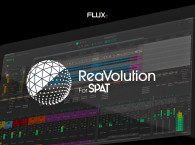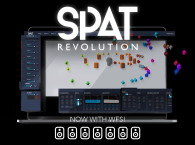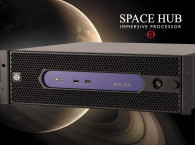
In 1969, Yamaha launched a global research program with the goal of finding the ideal relationship between performer, audience and space. This led to a deep understanding of acoustic technology, including structural and electronic acoustics. Based on its experience, and in response to growing venue diversification and a need to accommodate a wider array of events, in 1985 Yamaha released its Active Field Control (AFC) immersive audio system. Refined with improved performance and features in succeeding decades, AFC can dramatically change the acoustic response of a space at the touch of a button.
Connecting to the full range of Yamaha digital mixing systems and processing engines, as well as all the existing software solutions from Yamaha Steinberg, and sound reinforcement systems from Nexo, all of which are able to be fully networked and remote controlled over Dante, Yamaha AFC currently offers advanced 96kHz processing capability that delivers the required sound and space control definition.
Now, Yamaha expanded this fully integrated object-based and channel-based ecosystem to include AFC Enhance for ambience control and AFC Image for acoustic image control. With these tools, Yamaha now offers a system that allows users to create any acoustic environment, sonically transporting the audience to new and exciting places.

On the other hand, AFC Image allows users to control the perceived positions of acoustic images within a space. With a conventional stereo configuration, the acoustic image will vary according to the listener’s position. Immersive systems, on the other hand, allow acoustic images to be placed and moved wherever they are needed to produce the desired effect, and their position remains absolute regardless of listener location.
There are many features that make AFC Image unique, such as a speaker zoning function that assigns object sounds to only the desired speakers within the system, and binaural output that lets users experience the immersive sound in headphones. Systems can be created according to specific needs, allowing easy integration of DAWs, mixers, tracking systems, plus other third-party hardware and software.

As an example of this integration, the space conversion feature in AFC Image makes it possible to reproduce 5.1 channel content created using a DAW via a live sound system, easily matching playback to the venue and the audio system’s speaker layout. Working with Nexo’s NS-1 simulation software and a range of outboard equipment, this technology can deliver the creator’s content in a wide range of real-world environments.
“A wide spectrum of knowledge and experience forms the backbone of AFC. Its’ continued development and growth hinges on the expertise, high-level input and support from Yamaha group businesses such as Steinberg and Nexo. The Yamaha group alliance enables close collaboration between experts in a variety of related fields, driving innovation and development that keep AFC and other technologies way ahead of the curve,” Yamaha states.
In the global streamed presentation, executives from Yamaha Japan joined executives and heads of research from Nexo and Steinberg, as well as Yamaha’s subsidiaries around the world to explain the multiple components of this vision. Clearly, Yamaha has an edge in its AFC processor and the Steinberg Nuendo software, all of which can be tightly integrated and networked from the studio, for creation, to on-side live productions, using Yamaha digital consoles and touch controllers, such as an iPad. Yamaha is now working to expand this vision to spatial audio reproduction in consumers systems, from headphones for personal experiences, to home theater systems.
www.yamahaproaudio.com








